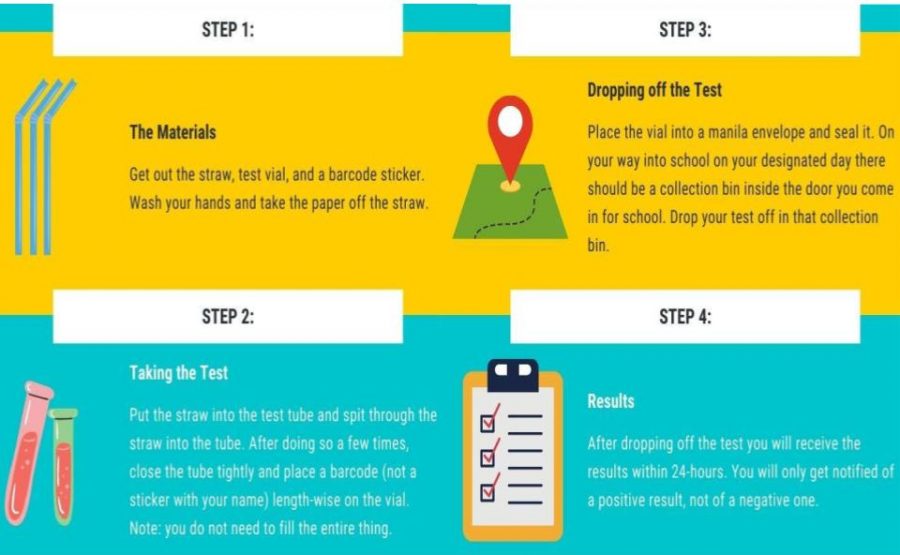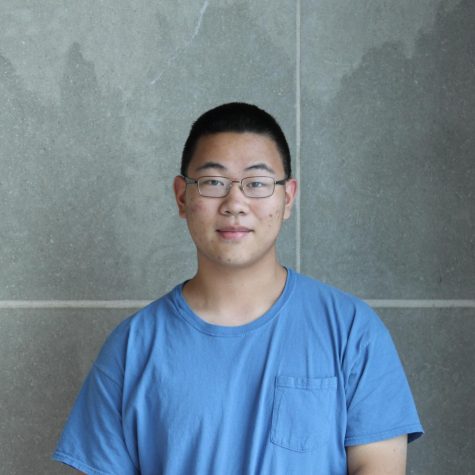Naperville Central begins COVID surveillance testing
March 3, 2021
As part of COVID-19 mitigation and detection strategies for Stage 3 of the “Return to Learn” plan, all staff and in-person students in junior high or high school have the option to opt into weekly COVID surveillance testing. The Naperville District 203 Board of Education voted to approve a 12-week contract with Safeguard Surveillance LLC for the tests during the Jan. 4 open session board meeting, allowing for up to $2 million to be spent on the program.
During the Feb. 1 board meeting, Christine Igoe, the district’s Assistant Superintendent for Student Services, said that around 50% of eligible students district wide were participating in surveillance testing. By the week of Jan. 25, the first week of testing for staff, 1026 staff of about 2450 total in the district had opted into the program, and one positive test was reported. Earlier, district administrators had set a target participation rate of 70%.
At Naperville Central, 934 students were participating in surveillance testing as of Feb. 10, representing about 51% of hybrid learning students, according to Carrie McFadden, Assistant Principal of Operations. Students began turning in their test kits the week of Feb. 1, and as of Feb. 16, nurse Erica Kelly says that no clinically significant surveillance tests results have been reported.
While the official deadline for families to sign up was Jan. 20, students can still opt in for testing at any time, as long as they are in hybrid learning or regularly traveling to the building for in-person extracurricular or athletic events.
“Occasionally an email goes home that includes the link [to the registration form], and kids can bring those forms to school,” McFadden said. “Then [Dean of Students Roger] Strausberger [gets] them their kit.”
Safeguard Surveillance’s tests cost the district $11 each and are reported to have a less than a .01% false-positive rate.
“The surveillance program we have uses saliva and a detection method called RT-LAMP (reverse transcriptase loop-mediated isothermal amplification) to detect COVID RNA,” said Dr. Ed Campbell, Stritch School of Medicine Microbiology and Immunology Professor, who runs the testing program.
Unlike conventional polymerase chain reaction (RT-PCR) tests, RT-LAMP tests cannot diagnose COVID-19, but they are easier for students to complete and for administrators to collect. At home, students should spit into their test tube, label it with a provided barcode, place it in the envelope they received, then drop it off at school. For test results to be accurate, students should not eat, drink or brush their teeth less than 30 minutes before they collect their spit sample.
A positive surveillance test initiates quarantine and contact tracing procedures, and students would then be encouraged to get an official COVID test to verify their status.
At this time, students can only present a negative RT-PCR test, not a negative surveillance test, to prove that they do not have COVID-19 if they are looking to return to in-person learning before the end of their required quarantine.
Even though any in-person student has the option to participate in surveillance testing, some don’t view surveillance testing as an absolutely necessary endeavor.
“I don’t really have an idea of how accurate the tests are going to be,” said sophomore Reese Kennedy.
He does think, however that the school could do a better job at communicating about the program.
“It would be good to make sure kids…and parents knew about it,” Kennedy said.
Administrators are looking to increase direct communication with families to raise participation rates.
“One thing we haven’t done is talk about it in our classrooms,” McFadden said. “I think if we made announcements or have classroom teachers remind students they can opt in, we’re still looking for parents to sign off, so there still needs to be that line of communication.”
Others think that surveillance testing should be required for all participants of in-person learning.
“It definitely makes me feel a lot safer going into the building knowing lots of groups of people have been out partying,” sophomore Adelaide Fleming said. “If it’s offered, I think everyone should do it. It doesn’t hurt anyone.”








